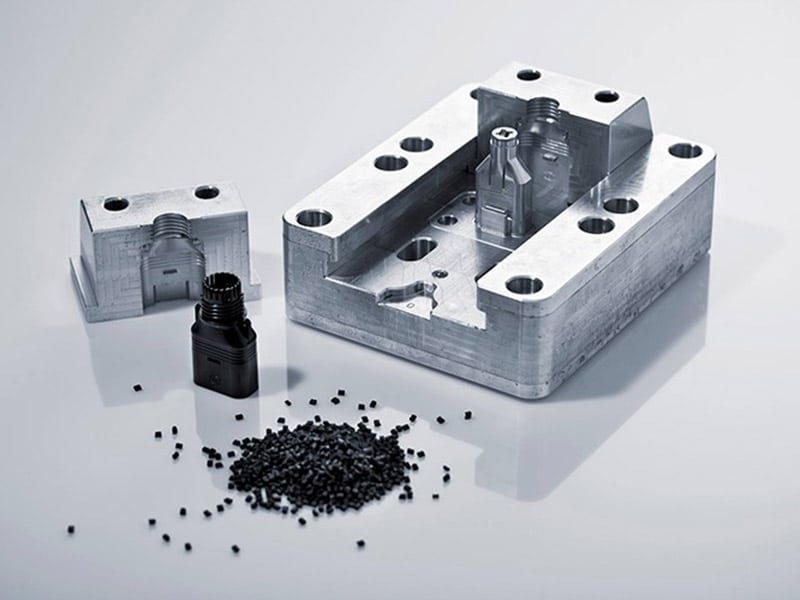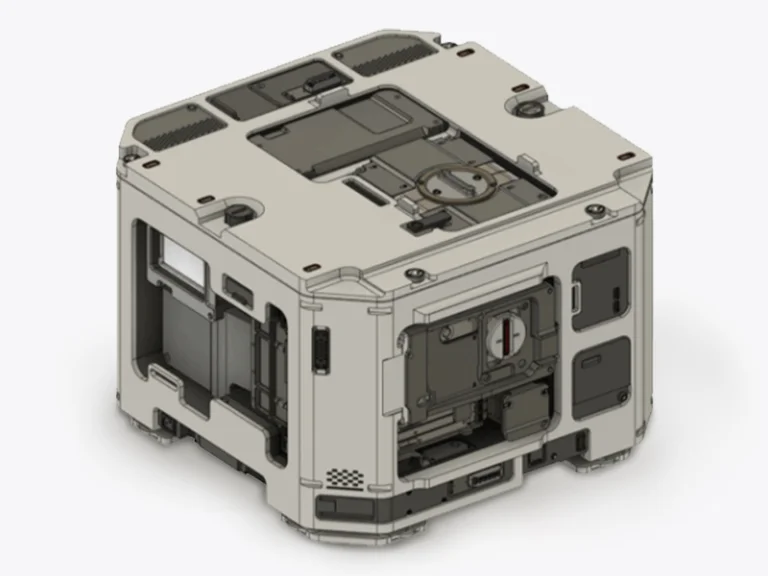Low pressure overmolding is a manufacturing process that enhances product durability, protects delicate components, and improves environmental resistance while maintaining cost efficiency. By using reduced injection pressure, this technique allows for seamless encapsulation of sensitive electronics, medical devices, and automotive components without the risk of damage. With its ability to create strong bonds between materials, provide superior sealing, and deliver ergonomic designs, low-pressure overmolding is widely adopted across industries requiring precision and reliability. This article explores the process, materials, equipment, benefits, applications, and key considerations to help manufacturers harness the full potential of low-pressure overmolding.

What is Low Pressure Overmolding?
Low-pressure overmolding refers to the process of applying a second material over a base substrate using low injection pressure. Unlike traditional overmolding that uses high-pressure systems to force materials into molds, low-pressure overmolding uses reduced pressure to create a more controlled, precise result. The low pressure allows for the use of sensitive components, like electronics or delicate parts, without risking damage during molding. It is a versatile process used to combine two different materials, typically in applications where flexibility, protection, or aesthetics are desired. The low injection pressure ensures that the materials flow smoothly and uniformly around the base component, creating a strong bond while protecting the underlying structure.
Low Pressure Overmolding Process
Material Melting: Thermoplastic polyamide materials, also known as “hot melts,” are heated in preparation for molding1. Processing temperatures typically range from 180 to 240 °C (356 to 464 °F).
Mold Insertion: The component to be protected is placed into one half of the mold. The other half of the mold is closed to create a space around the component1. Electronic components or parts that need encapsulation are inserted into the mold cavity3. Loading time is typically 5-10 seconds.
Overmolding: A low pressure molding machine gently pumps the liquified thermoplastic into the mold cavity until it’s filled1. Molten material is injected into the mold at low pressure3. Pressure is typically 1.5-40 bar3. Cycle time is approximately 15-60 seconds23. Continuous injection pressure is applied to compensate for shrinkage during cooling.
Cooling: The mold set is opened to allow the over-molded part to cool. Low Pressure Molding cools rapidly at room temperature.
Part Ejection: Once the part is cooled, it’s ejected from the mold. The molded part can be tested immediately after molding.
Materials Used in Low Pressure Overmolding
Typically, materials selected for overmolding are chosen based on their compatibility with the base component, as well as their specific properties such as flexibility, durability, and resistance to environmental factors.
- Thermoplastics: These plastics, such as polypropylene (PP), polyethylene (PE), and polyvinyl chloride (PVC), are widely used in low-pressure overmolding due to their flexibility, low cost, and ease of processing.
- Elastomers: Materials like thermoplastic elastomers (TPE) and rubber are often selected for their flexibility and ability to create soft, tactile surfaces in consumer products or medical devices.
- Engineering Plastics: Stronger materials like polycarbonate (PC), nylon (PA), and polyoxymethylene (POM) are used when high performance and durability are required, especially in automotive or industrial applications.
Benefits of Low-Pressure Overmolding
Protection of Delicate Components
One of the most significant advantages of low-pressure overmolding is its ability to protect delicate parts, such as electronics and PCBs, from potential damage. The controlled, low injection pressure reduces the risk of deforming or damaging sensitive components during the molding process. This makes it ideal for industries such as electronics, where precision is paramount, and the protection of the internal parts is critical.
Improved Durability and Reliability
Low-pressure overmolding enhances the durability and performance of the final product. The second material added through the overmolding process often provides a protective layer that increases resistance to wear, abrasion, and other environmental factors. Products such as automotive components, medical devices, and industrial parts benefit from improved performance and longevity when subjected to low-pressure overmolding.
Enhanced Sealing and Environmental Resistance
Low pressure overmolding provides superior sealing properties, which are especially beneficial in applications that require moisture, dust, or chemical resistance. The overmolded material can effectively encapsulate the base part, forming an impermeable barrier that protects against environmental elements. This is crucial in industries like medical device manufacturing and electronics, where sealing is essential to ensure the integrity and function of the product.
Cost-Effectiveness Compared to Traditional Methods
Low-pressure overmolding is more cost-effective than traditional high-pressure molding methods. The lower pressure required means that the machinery used is typically less expensive to operate and maintain, which can result in lower overall production costs. Additionally, the process is more energy-efficient, further reducing operational expenses. The ability to use thinner walls and more economical materials contributes to cost savings, particularly in large-scale production runs.
Applications of Low Pressure Overmolding
Electronics and PCB Encapsulation
Low-pressure overmolding is extensively used in the electronics industry for PCB encapsulation. This technique provides a protective layer around electronic components, preventing damage from moisture, dust, and physical impacts. By encapsulating delicate circuits and connections, overmolding ensures the longevity and reliability of electronics used in consumer devices, automotive systems, and medical equipment.

Medical Device Manufacturing
In the medical field, low-pressure overmolding is used to create biocompatible, reliable, and durable parts for medical devices. This includes components like seals, handles, and housings that require both protection and comfort. The overmolding process can also be used to combine rigid and soft materials, providing both strength and flexibility in medical tools and devices.

Automotive Components
Low-pressure overmolding is commonly used in the automotive industry for manufacturing parts that require a high degree of durability, flexibility, and protection. Examples include electrical connectors, cable housings, and gaskets. Overmolding in automotive applications helps protect components from environmental wear, heat, and vibration, all of which contribute to longer-lasting parts and improved vehicle performance.

Industrial and Consumer Products
Beyond specialized industries, low-pressure overmolding is used in a variety of consumer products and industrial applications. Items such as ergonomic handles, power tool grips, and protective casings for household appliances all benefit from the enhanced performance and aesthetics that low-pressure overmolding provides. The technique allows for the creation of products with multiple functions and properties, such as soft-touch exteriors with sturdy, impact-resistant cores.

Considerations in Low Pressure Overmolding
Key considerations in low-pressure overmolding include material selection, equipment, and process management.
Material Considerations
- Material Types: Thermoplastics, silicones, and elastomers are commonly used, with materials like TPE (Thermoplastic Elastomers) and TPU (Thermoplastic Polyurethane) offering flexibility, durability, and resistance to environmental factors. Polyamides are also frequently used.
- Material Properties: Materials should have the ability to adhere to substrates and withstand operational conditions. Low viscosity materials (similar to pancake syrup) are needed. Viscosity should be between 2,000 and 10,000 mPas (cP).
- Electronics Applications: For electronics, materials with high insulating properties and resistance to temperature fluctuations, like silicone or thermoset elastomers, are often preferred.
Equipment Considerations
- Specialized Machines: Low pressure overmolding requires specialized equipment designed to handle the delicate nature of the process. Precision injection molding machines operating at lower pressures are essential to ensure the substrate material is not compromised. These machines should have precise controls for temperature, speed, and pressure.
- Mold Design: Molds must accommodate the precise placement of the insert to ensure the overmolded component is functional and of high quality. Molds should be engineered for quick cycles and easy material flow to avoid defects. Aluminum tooling is often used.
- Temperature Control: Effective temperature control systems are essential to ensure the mold material cools at an optimal rate, preserving the integrity of the substrate and avoiding defects. Temperatures of 180-220°C are typically used.
- Material Delivery Systems: Proper material delivery ensures continuous and smooth injection, with pellet feeders and melting tanks chosen based on the volume and type of material used.
Process Management Considerations
- Insert Positioning and Alignment: Accurate placement of the insert is crucial.
- Bonding Issues: Managing bonding between materials is important.
- Cycle Time: Cycle time and production efficiency should be optimized. Cycle time from part loaded to part removed is around 1 minute.
- Low to Medium Volume Production: Low pressure molding is a good choice for low to mid-volume production.
- Cost: While offering cost benefits such as reduced material waste and energy consumption, low pressure overmolding may have higher tooling setup costs than traditional molding. However, it can use lower cost aluminum tooling.
Low Pressure Overmolding vs. Traditional Overmolding
Low-Pressure Overmolding
- Uses lower melt temperature (180-220°C).
- Uses lower pressure (around 100 PSI).
- Ideal for delicate electrical equipment like PCBs and sensors.
- Uses low-viscosity polyamide resins, similar to syrup.
- Good precision for complex designs.
- Better aesthetics.
- Slower cycle time.
- Less durable compared to high-pressure molding.
Traditional Overmolding
- Injects material at a higher temperature (185-300+°C).
- Uses higher pressure (around 25,000 PSI).
- Faster injection time, allowing for higher production volume.
- Material viscosity is comparable to taffy.
- Faster cycle time.
- Greater efficiency and durability.
- Higher melt temperature and pressure can damage delicate electrical components.
- Faster fill-rate can produce flaws and uniformity issues.
Here is a table summarizing the key differences between Low-Pressure Overmolding and Traditional Overmolding:
| Feature | Low Pressure Overmolding | Traditional Overmolding |
|---|---|---|
| Pressure | Low (around 100 PSI) | High (around 25,000 PSI) |
| Temperature | Low (180-220°C) | High (185-300+°C) |
| Material Viscosity | Similar to syrup | Similar to taffy |
| Ideal For | Delicate Electrical Components | Durable, Non-Delicate Parts |
| Cycle Time | Slower | Faster |
| Durability | Less Durable | More Durable |
| Equipment Cost | Lower | Higher |
| Part Complexity | Good Precision for Complex Designs | Can be Limited by Pressure/Temp |
| Potential Issues | Less Durable; Slower Production | Potential Damage to Sensitive Parts |
Conclusion
Low pressure overmolding offers numerous benefits, including enhanced protection, durability, and cost-effectiveness compared to traditional overmolding methods. By using reduced injection pressures, manufacturers can create high-quality, complex parts while minimizing the risk of damage to sensitive components. With applications in industries such as electronics, automotive, medical devices, and consumer products, low-pressure overmolding is becoming an increasingly popular choice for manufacturers seeking efficient and reliable solutions.



